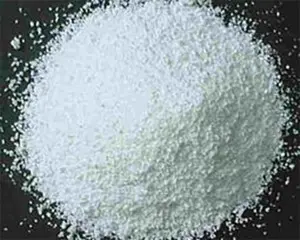Description
2-Bromoacetophenone: A Versatile Building Block in Chemistry and a Cautionary Tale
2-Bromoacetophenone, also known as phenacyl bromide, is a chemical compound with the formula C₈H₇BrO. It’s a white to yellowish crystalline solid with a pungent, lacrimatory odor. While not a household name, 2-bromoacetophenone plays a significant role in organic chemistry as a versatile synthetic intermediate. However, its potent irritant properties require careful handling and highlight the importance of safety in the lab.
A Versatile Synthetic Tool:
2-Bromoacetophenone’s utility stems from its reactive bromine atom attached to the alpha-carbon of a ketone. This makes it an excellent electrophile, readily participating in various chemical reactions, allowing chemists to construct complex molecules. Some of the key applications include:
- Alkylation and Acylation Reactions: The bromine atom can be replaced by various nucleophiles, allowing for the introduction of alkyl or acyl groups at the alpha position of the ketone. This is crucial for building carbon chains and introducing functional groups.
- Synthesis of Heterocycles: 2-Bromoacetophenone is widely used in the synthesis of various heterocyclic compounds, particularly those containing oxygen, nitrogen, or sulfur. It serves as a key building block for creating complex ring systems found in pharmaceuticals, dyes, and other functional materials. Examples include the synthesis of quinoxalines, benzoxazoles, and benzothiazoles.
- Protecting Group Chemistry: It can be used to protect thiol groups by reacting with them to form a stable thioether derivative. This allows chemists to selectively modify other parts of a molecule while the thiol group is protected. The acetophenone group can later be removed to regenerate the free thiol.
- Synthesis of Pharmaceuticals: Due to its ability to form complex structures, 2-bromoacetophenone is used as an intermediate in the synthesis of several pharmaceutical drugs.
Reactivity and Synthesis:
2-Bromoacetophenone is typically synthesized by the bromination of acetophenone. This reaction involves treating acetophenone with bromine in the presence of an acid catalyst. The bromine atom replaces a hydrogen atom at the alpha position, resulting in the formation of 2-bromoacetophenone and hydrogen bromide as a byproduct.
Safety Considerations: A Potent Irritant:
While a valuable chemical tool, 2-Bromoacetophenone is a potent irritant. It is a strong lacrimator, meaning it causes intense tearing and irritation of the eyes. Contact with the skin, even in small amounts, can cause burns and blistering. Inhalation of its vapors can cause severe respiratory irritation, coughing, and difficulty breathing.
Due to these hazards, 2-bromoacetophenone must be handled with extreme caution. Proper personal protective equipment (PPE) is essential, including:
- Safety Goggles: To protect the eyes from exposure to the chemical or its vapors.
- Gloves: To prevent skin contact. Nitrile or neoprene gloves are generally recommended.
- Respirator: Especially when handling large quantities or when there is a risk of vapor inhalation.
- Fume Hood: All reactions involving 2-bromoacetophenone should be performed under a well-ventilated fume hood to minimize exposure to its irritating vapors.
Conclusion:
2-Bromoacetophenone is a valuable and versatile reagent in organic synthesis, enabling the creation of complex molecules with diverse applications. Its ability to participate in a variety of reactions makes it a crucial building block for the synthesis of pharmaceuticals, dyes, and other functional materials. However, its potent irritant properties necessitate extreme caution and adherence to strict safety protocols. This chemical serves as a reminder of the importance of understanding both the utility and the risks associated with chemical reagents in the pursuit of scientific advancement. By prioritizing safety, researchers can harness the power of 2-bromoacetophenone while protecting themselves and those around them.












Reviews
There are no reviews yet.